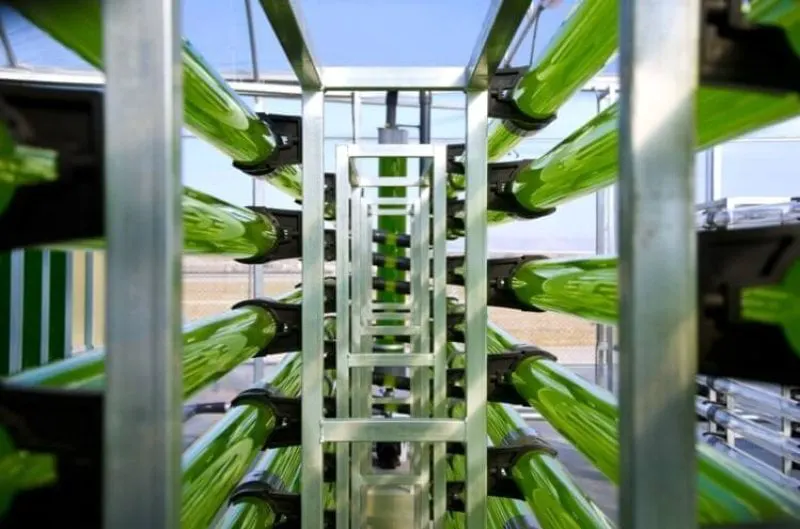Most plant-based proteins are made from soy. From microalgae to fermented fungi, these surprising sources are bringing us the faux meat of the future
Most plant-based proteins are made from soy. From microalgae to fermented fungi, these surprising sources are bringing us the faux meat of the future


What will take on the ubiquitous soy and pea? As well as chickpea, other plant proteins have come to the table looking to displace soy and pea and boasting potentially positive environmental and health footprints. [The European Institute of Innovation and Technology, or] EIT Food is championing Icelandic company Vaxa, which has developed a disruptive new technology platform to grow micro-algae. “Algea is a very promising sector,” said Giavedoni. Vaxa claims its patented, indoor, controlled and optimized process requires less than 1% of the fresh water and 1% of the land compared to a conventional omega-3 production facility. It is also carbon negative.
…
Fermentation is another sustainable technology on the EIT Food radar. One company utilising it is UK company ENOUGH, which produces a mycoprotein (which it calls Abunda), made by fermenting fungi with the natural sugars from grains.
Another EIT Food cohort is Israeli start-up Redefine Meat, which makes plant-based meat alternatives using 3D printing and which is preparing to launch in Europe after announcing a $29m fundraise at the start of the year. In July 2019, Redefine Meat unveiled the world’s first plant-based steak produced using industrial digital manufacturing of plant-based ingredients.
Read the original post

 | Videos | More... |

Video: Nuclear energy will destroy us? Global warming is an existential threat? Chemicals are massacring bees? Donate to the Green Industrial Complex!
 | Bees & Pollinators | More... |

GLP podcast: Science journalism is a mess. Here’s how to fix it

Mosquito massacre: Can we safely tackle malaria with a CRISPR gene drive?

Are we facing an ‘Insect Apocalypse’ caused by ‘intensive, industrial’ farming and agricultural chemicals? The media say yes; Science says ‘no’
 | Infographics | More... |

Infographic: Global regulatory and health research agencies on whether glyphosate causes cancer
 | GMO FAQs | More... |

Why is there controversy over GMO foods but not GMO drugs?

How are GMOs labeled around the world?

How does genetic engineering differ from conventional breeding?
 | GLP Profiles | More... |

Alex Jones: Right-wing conspiracy theorist stokes fear of GMOs, pesticides to sell ‘health supplements’




 Viewpoint — Fact checking MAHA mythmakers: How wellness influencers and RFK, Jr. undermine American science and health
Viewpoint — Fact checking MAHA mythmakers: How wellness influencers and RFK, Jr. undermine American science and health Viewpoint: Video — Big Solar is gobbling up productive agricultural land and hurting farmers yet providing little energy or sustainabilty gains
Viewpoint: Video — Big Solar is gobbling up productive agricultural land and hurting farmers yet providing little energy or sustainabilty gains Trust issues: What happens when therapists use ChatGPT?
Trust issues: What happens when therapists use ChatGPT? Fighting deforestation with CO2: Biotechnology breakthrough creates sustainable palm oil alternative for cosmetics
Fighting deforestation with CO2: Biotechnology breakthrough creates sustainable palm oil alternative for cosmetics California, Washington, Oregon forge immunization alliance to safeguard vaccine access against federal undermining
California, Washington, Oregon forge immunization alliance to safeguard vaccine access against federal undermining 30-year-old tomato line shows genetic resistance to devastating virus
30-year-old tomato line shows genetic resistance to devastating virus The free-range chicken dilemma: Better for birds, but with substantial costs
The free-range chicken dilemma: Better for birds, but with substantial costs ‘You have to treat the brain first’: Rethinking chronic pain with Sanjay Gupta
‘You have to treat the brain first’: Rethinking chronic pain with Sanjay Gupta
